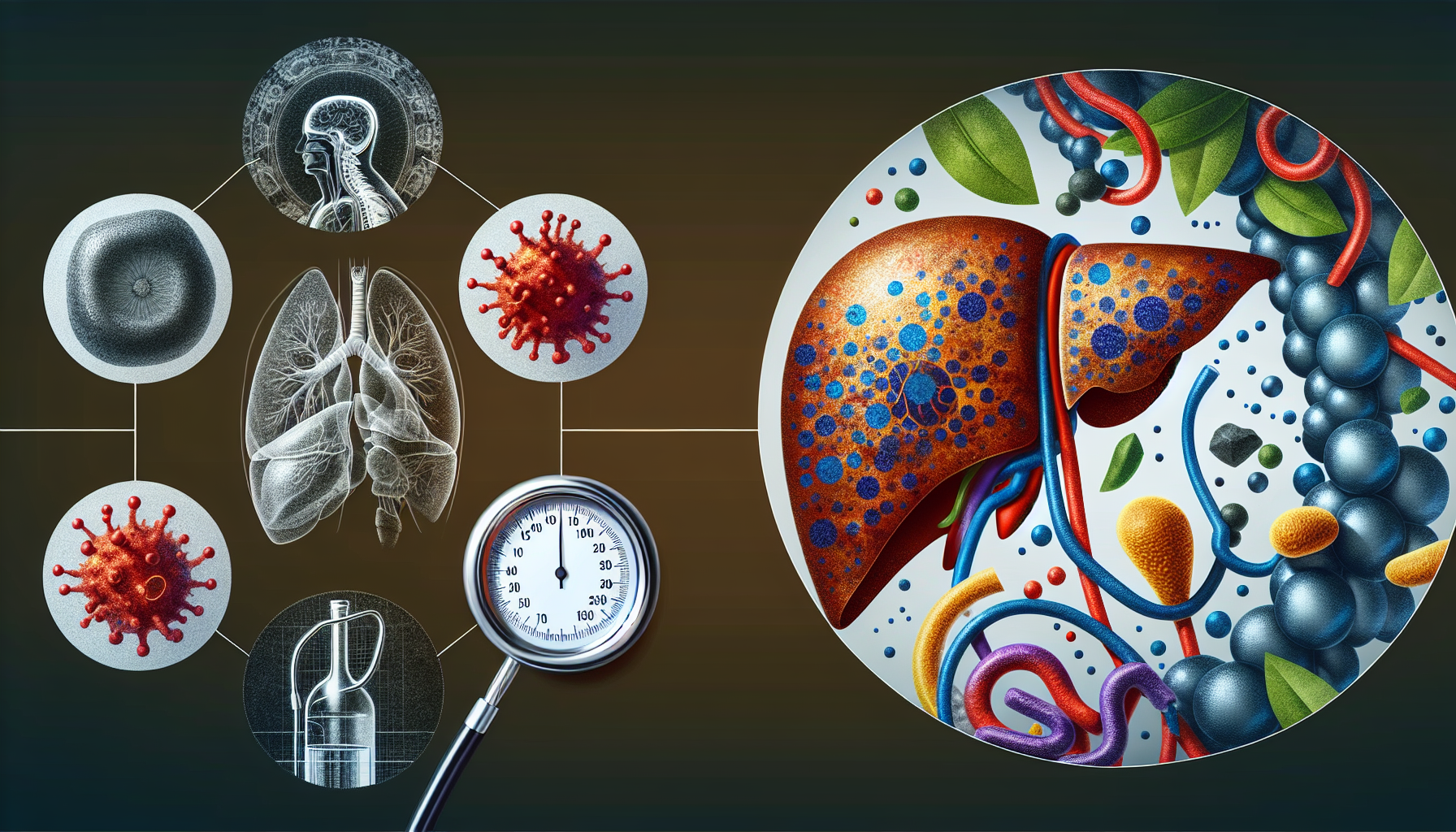What is alcohol dependence? It’s a condition where the urge to drink overrides the ability to stop, regardless of harmful consequences. Also termed Alcohol Use Disorder (AUD), it encompasses varying levels of addiction and impacts health and personal relationships. This exploration will provide insight into its symptoms, the underlying psychological and physiological mechanisms, and effective treatments.
Key Takeaways
- Alcohol Use Disorder (AUD) is defined by the DSM-5 with a spectrum of severity and includes criteria such as tolerance and withdrawal; it reflects a complex interplay of genetic, psychological, and environmental factors.
- AUD presents substantial risks to mental and physical health, often co-occurring with other mental health disorders and leading to severe health conditions like liver disease and cancers.
- Treatment options for AUD include medication-assisted treatment, psychotherapy, and support groups, while prevention strategies involve responsible drinking habits, stress management, and community and family engagement.
Defining Alcohol Dependence

Alcohol dependence is a term that many of us have heard, but what does it truly mean? In essence, it describes a powerful craving for alcohol, a preoccupation that leads to an inability to control drinking behavior. But the terminology has evolved over time, and the term we now use is Alcohol Use Disorder (AUD), which encompasses alcohol addiction as well.
The American Psychiatric Association’s Diagnostic and Statistical Manual (DSM-5) has integrated previously separate disorders, namely alcohol abuse and alcohol dependence, into AUD, with sub-classifications of mild, moderate, or severe. A person is diagnosed with AUD if they exhibit any two of the eleven criteria during the same 12-month period. The severity of AUD is defined by the number of symptoms, with mild AUD corresponding to 2 to 3 symptoms, moderate AUD to 4 to 5 symptoms, and severe AUD to 6 or more symptoms.
One significant change in the DSM-5 is the introduction of craving as a new criterion for AUD diagnosis, while legal problems have been eliminated from the criteria. This shift in focus underscores the psychological aspects of AUD and moves away from the legal consequences of alcohol misuse.
What distinguishes AUD from the previously defined alcohol abuse? The current terminology used in DSM-5, AUD, is prominently characterized by symptoms such as tolerance and withdrawal, marking a more severe condition of problematic alcohol use.
Symptoms and Warning Signs
The early signs of AUD can be subtle but telling. One key sign is alcohol tolerance, where a person needs increased amounts of alcohol to achieve the desired effects. This isn’t about being a ‘good drinker’. It’s a warning signal that one’s body is becoming accustomed to alcohol, leading to the need for more alcohol to feel the same effect.
Individuals with AUD often exhibit alcohol withdrawal symptoms, which can range from mild to severe. These symptoms include anxiety, altered reward set point, and physical signs such as sweating, tremors, and insomnia. These are the body’s responses to the absence of alcohol, a substance it has become dependent upon. This condition is known as alcohol withdrawal syndrome.
Another concerning sign is an impaired ability to fulfill major obligations at work, school, or home, leading to substantial distress and functional impairment. This isn’t about occasional slip-ups or a bad day at work. It’s about a consistent and noticeable decline in one’s ability to manage responsibilities.
A core aspect of AUD is prioritizing drinking over other activities, responsibilities, and even social or hobby interests. When drinking alcohol takes precedence over everything else, it’s a clear sign that alcohol is no longer just a part of life, but instead, it’s starting to take over.

Alcohol Rehab South Carolina
If you’re seeking alcohol rehab in South Carolina, you have various options available to you. South Carolina offers a range of rehabilitation facilities and programs tailored to individuals struggling with alcohol addiction. These programs often include medical detoxification, counseling, therapy sessions, and aftercare support to help individuals on their journey to recovery. It’s essential to research and choose a facility that aligns with your specific needs and preferences. Additionally, consider factors such as location, amenities, treatment approach, and success rates when selecting the right alcohol rehab program in South Carolina for yourself or a loved one.
The Science Behind Alcohol Dependence
Now, we turn our attention to the science underpinning AUD. Consumption of alcohol alters brain function by modifying inhibitory and excitatory neurotransmitters, resulting in the onset of tolerance and withdrawal symptoms. Essentially, the intake of alcohol disrupts the brain’s communication pathways, causing an imbalance.
The main neurotransmitters affected by alcohol include:
- GABA, which causes sedation and decreased anxiety
- Glutamate, which leads to sedation via reduced excitatory activity
- Dopamine, which is associated with alcohol’s reinforcing effects
In other words, to drink alcohol and experience alcohol consumption can lead to a temporary feeling of relaxation or euphoria, which can make it highly addictive, especially when consuming too much alcohol.
What leads some individuals to develop AUD, while others remain unaffected? Genetic factors contribute to this. An individual’s genetic risk of AUD increases with a family history of the disorder, yet no single ‘alcohol gene’ is solely responsible. This highlights the intricate nature of AUD, which arises from a multifaceted interplay of various factors, not merely one gene.
AUD reflects an allostatic state marked by an imbalance in the brain’s reward and stress systems beyond normal homeostatic limits. This means that with AUD, the brain’s balance is tipped, with the pursuit of reward (drinking alcohol) taking precedence over the avoidance of stress.
Mental Health and Alcohol Dependence
A concerning aspect of AUD is its relationship with other mental health disorders. AUD often co-exists with disorders including depressive and anxiety disorders, and trauma-related stress, with significant implications for treatment and outcomes. This means that addressing AUD often involves treating more than just alcohol misuse.
Individuals with AUD have an increased suicide risk, with alcohol implicated in nearly one-third of suicide deaths. Not only does alcohol worsen symptoms of psychiatric conditions that are major contributors to suicide, but it also impairs judgement, which can lead to tragic decisions.
Sleep-related issues are commonly reported by individuals with AUD. The presence of a sleep disorder can potentially lead to the development of AUD and can be worsened by alcohol consumption. This creates a vicious cycle where poor sleep encourages alcohol use, which in turn further disrupts sleep.
Given the intertwined nature of AUD and other mental health issues, integrated treatment strategies are needed. These approaches address both AUD and co-occurring mental health issues, yielding better results. However, such approaches are not without challenges. The recovery processes can be more difficult and the risk of relapse requires careful management.
Physical Health Risks of Alcohol Dependence

The physical health risks of AUD are profound and far-reaching. A direct consequence of prolonged heavy alcohol use is Alcohol-associated Liver Disease (ALD). This condition can progress from:
- liver steatosis (fatty liver)
- fibrosis
- cirrhosis
- hepatocellular carcinoma (liver cancer)
The rise in mortality rates from cirrhosis, particularly among young adults aged 25 to 34, highlights the growing health burden of AUD on society. This is a stark reminder of the serious consequences of AUD – it’s not just about the individual, but also about the societal impact.
Regular heavy alcohol consumption, often involving excessive alcohol, associated with AUD is linked to an increased risk of several types of cancer, including:
- Cancers of the mouth
- Throat
- Esophagus
- Liver
- Colon
- Breast
Due to the excessive alcohol use, the risk of these cancers increases significantly.
This shows how the effects of AUD can infiltrate various aspects of physical health, leading to severe and life-threatening conditions.
Apart from cancers and liver diseases, AUD can lead to a myriad of other health issues, such as high blood pressure, stroke, and coronary alcohol-related heart disease. The health risks of AUD are diverse and severe, underlining the importance of understanding and addressing AUD.
Assessing Alcohol Dependence
Understanding AUD requires an assessment of the individual’s drinking habits and behaviors. Healthcare professionals utilize structured diagnostic criteria to evaluate AUD. This involves a thorough examination of the individual’s symptoms and behaviors related to alcohol use.
AUD is clinically diagnosed using DSM-5 criteria, which include a pattern of symptoms that indicate an inability to regulate drinking and a strong internal drive to use alcohol. This makes the assessment of AUD a complex process that requires a comprehensive understanding of the individual’s relationship with alcohol.
Structured diagnostic criteria alone may not suffice. Healthcare professionals also use standardized screening tools like the Alcohol Use Disorders Identification Test (AUDIT), CAGE questionnaire, and Severity of Alcohol Dependence Questionnaire (SAD-Q). These tools provide a more nuanced understanding of the individual’s drinking habits and their impact.
The use of technology has also found its way into the assessment of AUD. Electronic Screening and Brief Intervention (e-SBI) is a newer approach that uses electronic devices to provide personalized feedback and identify excessive drinking. This illustrates the innovative methods being used to identify and address AUD in today’s digital age.
Treatment Options for Alcohol Dependence

Handling AUD requires a multifaceted approach. Treatment options include medications, behavioral counseling interventions, and support groups. These methods offer a range of benefits like improved self-esteem, healthier lifestyle choices, and enhanced personal relationships, providing a comprehensive strategy to address AUD.
Medication-Assisted Treatment

A crucial element in managing AUD is medication-assisted treatment (MAT), which can be initiated in various healthcare settings including primary care and mental health services administration. This involves the use of medications as part of a broader treatment strategy.
Medications such as disulfiram, naltrexone, and acamprosate have proven effective in treating AUD. Each of these medications works differently:
- Naltrexone reduces cravings and alcohol consumption
- Acamprosate aids in maintaining abstinence
- Disulfiram works as an aversive agent that produces unpleasant effects when alcohol is consumed.
The World Health Organization acknowledges the significance of naltrexone and acamprosate as treatments for AUD, listing them in the Model List of Essential Medicines. This recognition underlines the effectiveness and importance of these medications in treating AUD.
Significantly, these medications can often be combined with treatments for psychiatric disorders that frequently co-occur with AUD and substance abuse. This emphasizes the integrated approach to AUD treatment, which addresses not only the misuse of alcohol but also any concurrent mental health disorders.
Psychotherapy and Support Groups
Alongside medication, psychotherapy and support groups play a crucial role in overcoming AUD and maintaining sobriety. Attending support group meetings significantly improves an individual’s chance of achieving and maintaining long-term recovery from AUD.
Millions of Americans attend addiction support groups each year, demonstrating the widespread use and availability of these resources. Some well-known support groups include:
- Alcoholics Anonymous (AA)
- Narcotics Anonymous (NA)
- SMART Recovery
- Celebrate Recovery
- Dual Recovery Anonymous (DRA)
- Refuge Recovery
These support groups provide a mutual aid environment for individuals seeking to overcome addiction.
Support groups offer a safe space for individuals to share experiences, validate each other, and discuss issues in a judgment-free environment, which can be crucial for ongoing recovery. They also encourage members to form sober friendships and support networks outside of meetings, which can be instrumental in maintaining sobriety.
In addition to support groups, psychotherapy is a useful tool in treating AUD. Some common types of psychotherapy for AUD include:
- Cognitive-behavioral therapy (CBT): This therapy addresses patterns of thought and behavior contributing to addiction.
- Group therapy: This therapy offers a communal setting where individuals can share experiences and strategies for coping with AUD.
- Motivational interviewing: This counseling approach helps individuals find the motivation to change their drinking behavior.
These therapies can be effective in treating alcohol dependence, helping individuals overcome AUD and maintain sobriety.
What is Rehab
Rehabilitation, often shortened to “rehab,” refers to the process of restoring someone to good health or normal life through therapy and education. In essence, it’s a structured approach aimed at helping individuals recover from various physical, mental, or emotional conditions that have affected their ability to function optimally. The specific goals of rehab can vary widely depending on the individual’s needs and the nature of their condition. However, common objectives include improving physical strength and mobility, managing pain, enhancing mental well-being, and fostering independence. Rehab programs can encompass a range of interventions, including physical therapy, counseling, medication management, and lifestyle modifications, tailored to address the unique challenges faced by each person. Overall, the overarching aim of rehab is to empower individuals to regain control over their lives and achieve a better quality of life.
Preventing Alcohol Dependence

The first step towards preventing AUD is to adopt responsible drinking habits or even to stop drinking. This entails:
- Eating before and while drinking
- Monitoring the number of drinks consumed and setting personal limits
- Moderating alcohol intake by sipping and alternating with non-alcoholic beverages
- Steering clear of activities that encourage quick alcohol consumption
- Avoiding alcohol entirely when driving.
Managing stress and avoiding triggers are also crucial in mitigating the risk of alcohol misuse. This requires identifying potential triggers, establishing personal drinking guidelines, and finding alternative activities and coping methods.
Community engagement and family involvement also play a significant role in prevention. This includes:
- Supporting community efforts
- Not serving alcohol to young people or those who have overconsumed
- Education and outreach
- Helping younger family members develop important life skills.
What is Alcohol Use Disorder
Alcohol use disorder (AUD) is a chronic condition characterized by an inability to control drinking despite adverse consequences. It’s a diagnosable medical condition marked by a pattern of compulsive alcohol use, leading to physical dependence and tolerance. Individuals with AUD may experience cravings, difficulty cutting down on drinking, and continue to drink despite knowing it’s causing problems in their lives. AUD can range from mild to severe and can have serious health implications, including liver damage, cardiovascular problems, and mental health disorders like depression and anxiety. Treatment for AUD often involves a combination of therapy, medications, and support groups to help individuals regain control over their drinking habits and improve their overall well-being.
Impact on Relationships and Family Life
The effects of AUD extend beyond the individual, significantly impacting their relationships and family life. Some of the effects include:
- Intensified marital issues, leading to increased conflict, infidelity, and financial instability
- A strong correlation between AUD and domestic violence
- A strong correlation between AUD and child abuse
Families of those with AUD may experience neglect and the prioritization of alcohol over essential family activities, contributing to disruption in family life and financial problems. Chronic health issues caused by AUD can force individuals to leave their careers prematurely, creating additional strain on family income and stability.
Individuals with AUD often experience the following:
- Withdrawal from society and loss of interest in activities they once enjoyed
- Alteration of social circles to include other heavy drinkers or becoming isolated
- Neglect of duties at work, home, and school due to impaired cognitive and physical abilities.
The financial impact of AUD includes:
- Impulse buying
- Poor financial decisions due to lowered inhibitions
- The potential to leave one’s career early due to alcohol-related health issues
- Legal troubles such as disorderly conduct, DUIs, and involvement in domestic disputes or violence
These are increased risks for those experiencing AUD.
Summary
Understanding AUD is not just about recognizing the physical and mental health implications. It’s about understanding its impact on an individual’s life, relationships, and society at large. It’s about acknowledging the importance of assessment and diagnosis, and knowing that effective treatment options are available. It’s about recognizing the power of prevention and the crucial role of support groups and community. Understanding AUD is the first step towards a healthier society. Let’s take that step together.
Frequently Asked Questions
What are the 4 types of wives of alcoholics?
There are four types of ‘wives of alcoholics’, as described by Whalen in 1983: Suffering Susan, controlling Catherine, wavering Winifred, and punitive Polly. These types are characterized by the wives’ varying personalities and their impact on their husbands’ alcoholism.
What are the 3 types of alcoholic?
There are three types of alcoholics: chronic severe, functional, and young adult alcoholics, with different percentages of American alcoholics falling into each group (date not provided).
Which of the following is a symptom of alcohol dependence?
Symptoms of alcohol dependence may include using alcohol in larger amounts than intended, persistent desire to cut down but being unsuccessful, spending a lot of time obtaining and using alcohol, feeling a strong craving to drink, failing to fulfill obligations due to alcohol use, and continuing to drink despite knowing it’s causing problems in various aspects of life.
What is the meaning of alcohol dependence?
Alcohol dependence refers to the body’s physical inability to stop drinking and the presence of alcohol cravings. It is a chronic medical condition that includes excessive drinking, craving for alcohol, and an inability to control consumption.
What are the early signs of Alcohol Use Disorder?
The early signs of Alcohol Use Disorder include increased alcohol tolerance, withdrawal symptoms, neglecting responsibilities, and giving drinking priority. Pay attention to these signs and seek help if you or someone you know is experiencing them.









